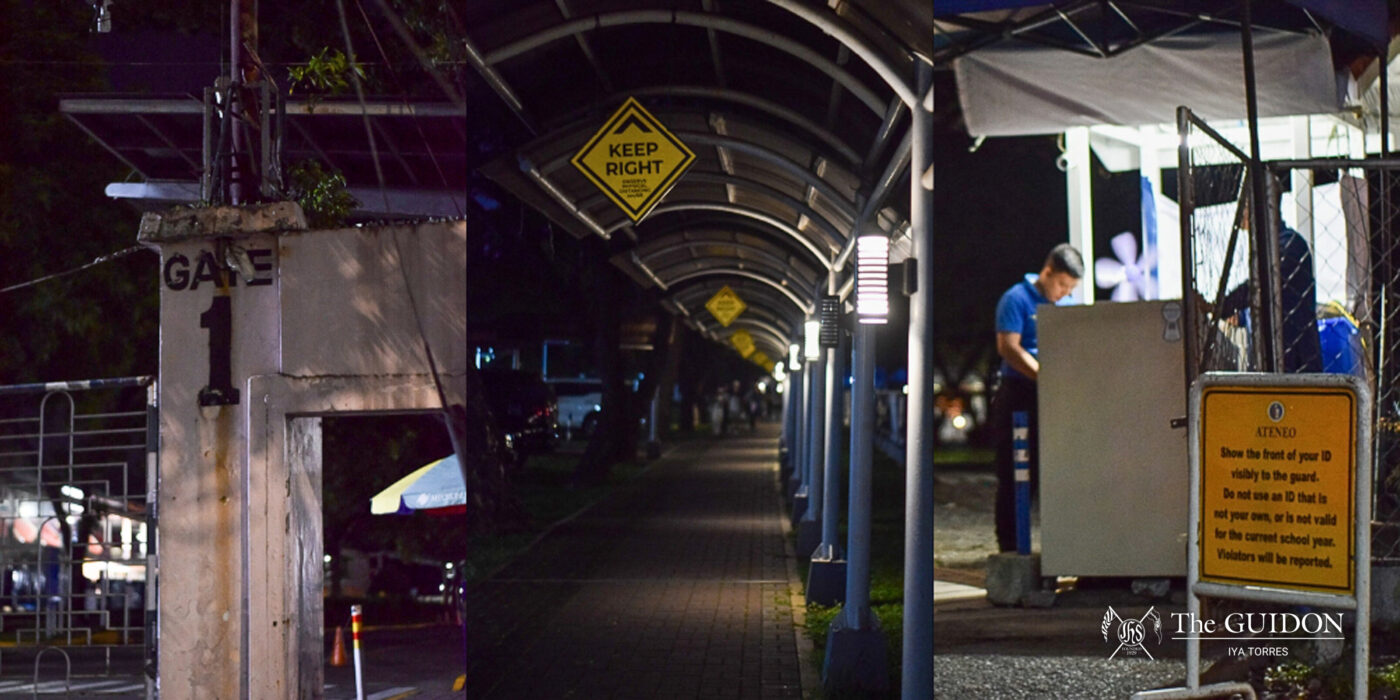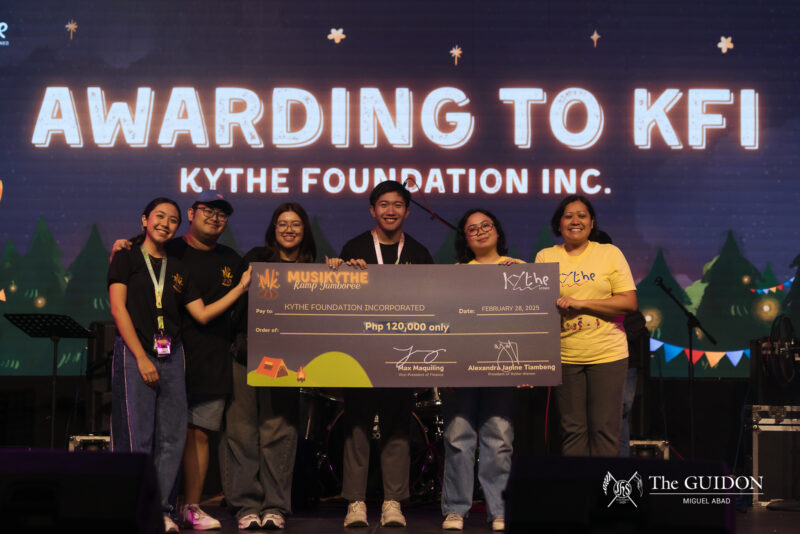TO GAUGE campus accessibility in the Ateneo, the Sanggunian investigated the student body’s concerns through its campus access survey on mobility-related matters last June 20. Among the most significant issues were the 10 PM closing time for Gate 3 and safety concerns due to poor lighting quality in campus walkways.
With the survey responses, the Sanggunian formulated recommendations which include the extension of access hours to gates and study spaces in the University, improvements with campus lighting, and special gate access past curfew for dormers.
Following the submission of the report to the Campus Mobility Forum (CMF) last July 1, efforts to ideate solutions were initiated through the Future-Making workshop held last July 13 in collaboration with Tagpuan Center for Dialogue, Research and Collaboration (Tagpuan), where the survey results were presented by CMF Chair Czarina Saloma-Akpedonu, PhD.
Taking steps forward
Discussing the motivations for conducting the survey, former Sanggunian Department of Communications (DOC) Vice Chairperson Ana Kristel Uy stated that it was created primarily in response to concerns expressed privately to the Sanggunian and those posted on the ADMU Freedom Wall.
“[Accessing the campus at night] was an issue that was informally brought up by students, most of [whom] are dormers and people with late night classes, and also those who just stay [on] campus [to do] extra work,” Uy explained.
Despite the initial purpose of assessing students’ stance on campus access hours, the final report ended with a broad spectrum of concerns from the student body. Uy shared that the Sanggunian received the feedback well, recognizing the survey as a means for students to express their various apprehensions.
Andy Goh (2 BS MIS) echoed these worries as they discussed their dorm experience late at night. “After 12 midnight, the only gate that I can pass through is [the] Gate 3 driveway. The whole campus is very dark, [and the] lights are off for the most part except for near the dorms or Gesù,” they said.
In ideating the solutions mentioned in the report, Uy stated that the current DOC and the Sanggunian Department of Administrative Affairs (DAA) made proposals focusing on “what the students need,” such as extending access hours for Gates 1 and 2.5, as well as improving the walking experience in Gate 3, which had several complaints of lacking a pedestrian lane.
Current Sanggunian DOC Chairperson Brix Mayabason mentioned that the CMF has acknowledged receiving the report that the Sanggunian crafted. While further solutions are still being discussed by the administration, Tagpuan announced that a feedback and idea box form will soon be made available to further gather community insights.
A brighter future
With the initial goal of finalizing its recommendations by May 30, the CMF continues to work toward developing solutions and facilitating stakeholder conversations.
Saloma-Akpedonu mentioned during the July 13 workshop that since the Forum’s establishment, they have conducted campus mobility walks, multi-stakeholder conversations, campus mobility biking and photovoices, as well as focus group discussions.
The workshop was also considered as one of CMF’s initiatives, which tackled a range of concerns, with some also mentioned in the Sanggunian report, such as improving campus lighting at night. Moreover, attendees also proposed several recommendations, including additional refreshment facilities for pedestrians and commuters, a bus and jeep bay, and a bike-sharing program.
As of August 1, The GUIDON reached out to Saloma-Akpedonu regarding the CMF’s next plans, but was informed that the Forum has yet to submit the survey report to the University President. Nonetheless, Saloma-Akpedonu reassured that she is in contact with Sanggunian President Lean Rosendo in accomplishing the final report.
Paving the road ahead
As a former Sanggunian officer, Uy expects that further initiatives will be made to address the students’ concerns on campus. “I think that one of the ways that […] students actually feel that the administration cares and [the] Sanggunian cares for the students is to implement changes that benefit them,” Uy stated.
Echoing similar sentiments, Mayabason revealed plans to gather more survey responses from new Ateneans who may provide further insight on other issues the recent report may not have covered.
Beyond the survey content, Sanggunian DAA Chairperson Reigne Montalbo emphasized the importance of coordination between the University administration and the Sanggunian for achieving meaningful outcomes.
For Goh, initiatives like the campus access survey are necessary for students to not only be heard, but also to feel safe around campus. “Dormers would be more safe and less frustrated in managing schedules and feel more at peace within the dorms,” they explained.
In developing solutions for campus mobility, Tagpuan Program Officer for Internal Engagements Isa Nazareno encouraged members of the Ateneo community to continuously voice their concerns, hoping for increased dialogue driven by shared values between stakeholders in the future.







